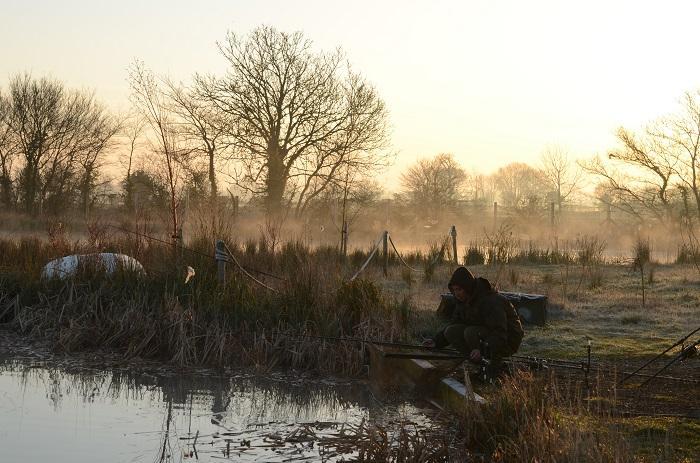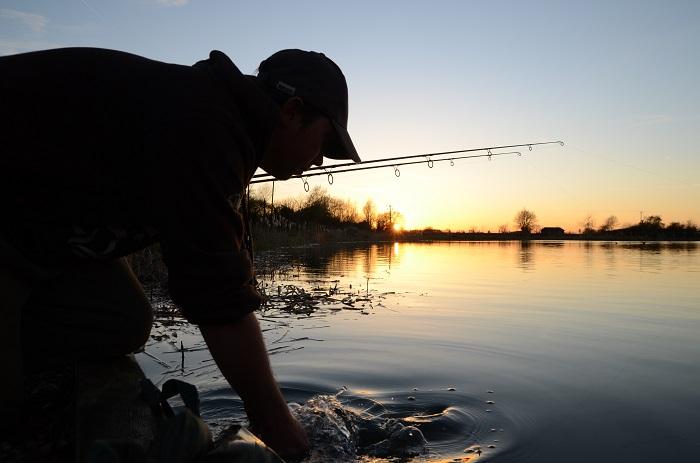Successful winter carp fishing is all about preparation, and quite a lot of it is mental. Even those more spontaneous break-in-the-weather trips are made better and more rewarding with some degree of planning.
Chose your venues carefully
In fact, breaking down your winter campaign into routine and spur-of-the-moment categories is probably a good place to begin. On the ‘routine’ side of the fence, you can start by thinking about venues. You could isolate one or select a handful, but it pays to know what you want to get out of your winter fishing.

Sitting beside a lake in freezing conditions with 16 hours of darkness can test even the keenest of anglers, so make sure there is some reward on the horizon. If you are determined to concentrate on a gruelling venue that might just do a significant bite or two, then fair play to you, but it can also help to have a fall-back water where you can scurry to for a quick bite just to restore your confidence.
Feeding patterns can be short and at predictable times
Whatever type of venue you choose, remember that winter carp fishing doesn’t have to be about overnight stays. Feeding times in winter can come in very short, but predictable, windows. If you can work them out, you can save all the hassle of long, cold sessions and firmly focus on being in position either side of the key times.
You can also plan ahead in a similar manner when it comes to location. As temperatures drop and carp activity wains, the fish can hold up in the same areas for weeks at a time. Just ask a seasoned match angler where the carp will be in winter at his or her local commercial venue and they will be able to give you an answer with almost guaranteed accuracy.
Location is even more crucial in winter as carp are less active
The carp you are fishing for might not be as pressurised as those in a well-stocked match lake, but their whereabouts can be nearly as predictable. Pay close attention to catch reports and see what you can unearth about previous winter captures.
If you have no prior information to go on, the deepest area of the lake is often a good starting point, as is the centre of the lake farthest from the banks. Conversely, deeper snaggy margin regions are also well worth checking out. With much less fish and wildlife activity in winter, water clarity is often far better, so not only can you spot fish in shallower lakes you can also pick out coloured patches where the carp have disturbed the bottom.
Shallower lakes respond quick to an increase in temperature
Staying on the theme of water depth, it’s worth knowing generally how deep your chosen venue is when considering how much of an impact the weather will have. On shallower lakes, a spell of mild or windy weather can flick a feeding switch quite quickly. You just have to take a look at Orchid Lake’s stellar winter form to see that. On deeper venues, however, mild weather will take much longer to raise the water temperature. The flipside on these waters is that sharp cold spells will also have less of a negative effect and the carp’s whereabouts will be just that little bit more predictable.

Of course, as we all know, carp like to break the rules and you will have to figure out your own lake’s winter habits for yourself.
Corn, maggots and worms can be great winter baits
Moving on to the subject of bait, it’s generally considered that you don’t need much of it in winter. In terms of preparation then you can make sure you’ve put away the oily fishmeals and got a supply of more digestible boilies such as nut and milk-based offerings, but you might want to skip boilies altogether. With silverfish activity also at a minimum, winter can be the ideal time to use maggots, corn and worms to tempt carp. All three are easily digested by the fish in cold water and maggots in particular have certainly become a big favourite in recent winters. If you intend to use lots of them, see if there’s a maggot breeder near you who could offer a bulk discount, or ask your local tackle shop for ‘feed maggots’, which are generally much cheaper.
Use glugs, goos and sprays to increase your bait’s attraction
Another great way to prepare for winter carp fishing on the bait front is to start layering some liquids on your hookbaits. Dips and sprays such as DT Baits DNA liquid can all be added long in advance of your sessions and given time to properly penetrate your baits. Single highly attractive pop-ups can be a real winner in winter. Some anglers believe that a carp’s senses are dulled in colder water, so bright and smelly is the way to go.
Consider going against the grain
A much more left field option is to go the other way and keep on piling in the bait. It’s risky, but if you can regularly bait up at your venue then it is certainly possible to keep the carp troughing throughout the colder months. Once they stop, it’s hard to get them to start again until spring, but they are simple creatures and if you keep the bait going in they will keep coming to find it.
Keep and eye on the weather and be prepared to go at short notice if the conditions are right
If you are more of an opportunist winter carper then don’t neglect preparation. Thin down your gear and organise it properly so you can literally grab it and go if the conditions seem right. And, if the weather is what will spark you into hitting the bank, invest in a quality app on your phone that can give you a heads up on incoming favourable conditions.
Finally, make sure you have adequate cold-weather clothing. An uncomfortable carper is an inefficient one. Stay warm and stay motivated.

